Sync Setup - Steinberg Nuendo on a separate computer
Introduction
The following explanation and screenshots are related to Nuendo 12, but the steps will be similar for other versions.
The easiest way to provide Video Sync with incoming MTC/MMC data from another computer, is to setup a network MIDI connection using Apple's built-in Audio MIDI Setup tool to transmit all the MIDI data between the two computers. It is usually not necessary to buy a separate MIDI interface and cables to connect the MTC sending and receiving computers, although a cabled MIDI connection can be used if preferable. Since MIDI was developed in the 80s, it has a really low data rate. Therefore it should not be a problem to use network MIDI in a Wi-Fi environment.
A cabled ethernet network connection is the preferred method for reliability.
The following instructions assume that you have two Apple Macs: one with Video Sync; the other with Nuendo.
If the Nuendo computer is a PC, rtpMIDI is a free PC equivalent to Apple's network MIDI implementation. Download & setup instructions can be found here: http://www.tobias-erichsen.de/software/rtpmidi.html
Our thanks to Tobias Erichsen for this invaluable tool.
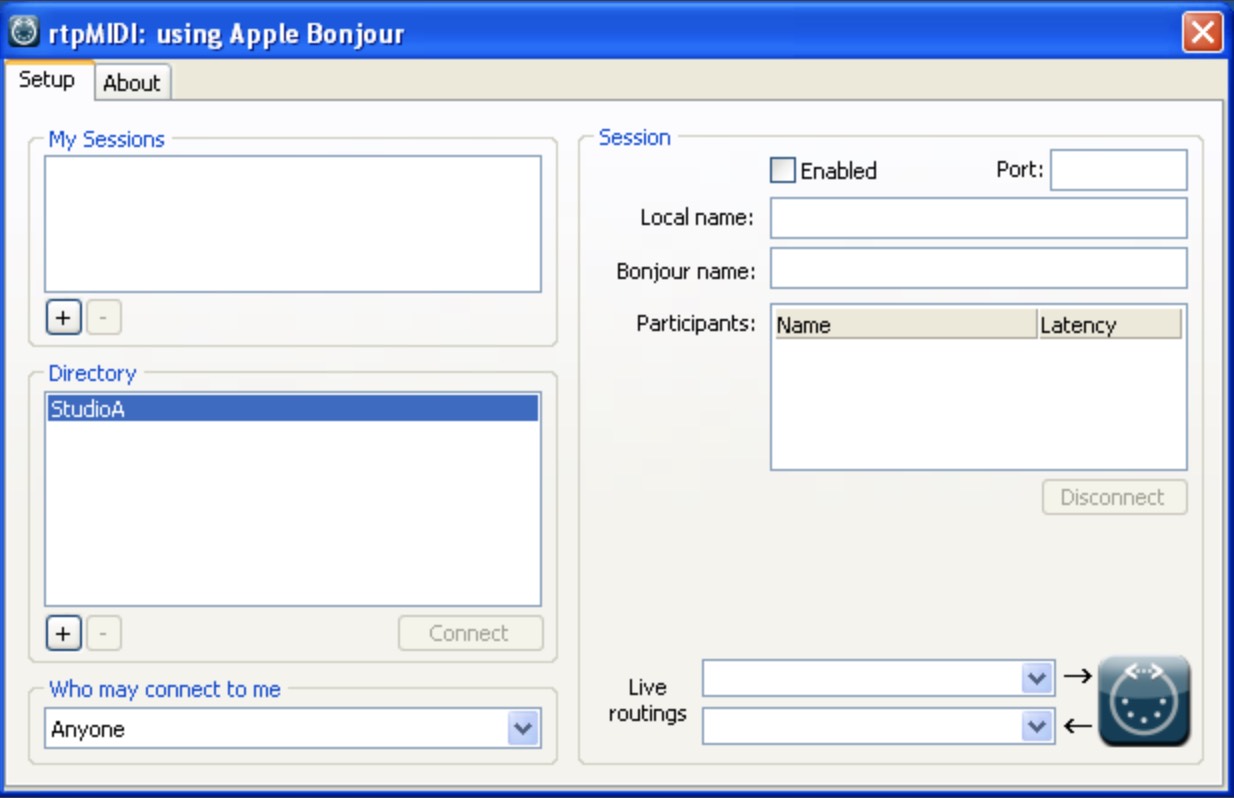 {width=80%}
{width=80%}
Configuring Audio MIDI Setup on the Nuendo computer to send MTC & MMC over the Network
On the Nuendo computer, go to Applications > Utilities & open Audio MIDI Setup. The MIDI Network Setup window should appear:
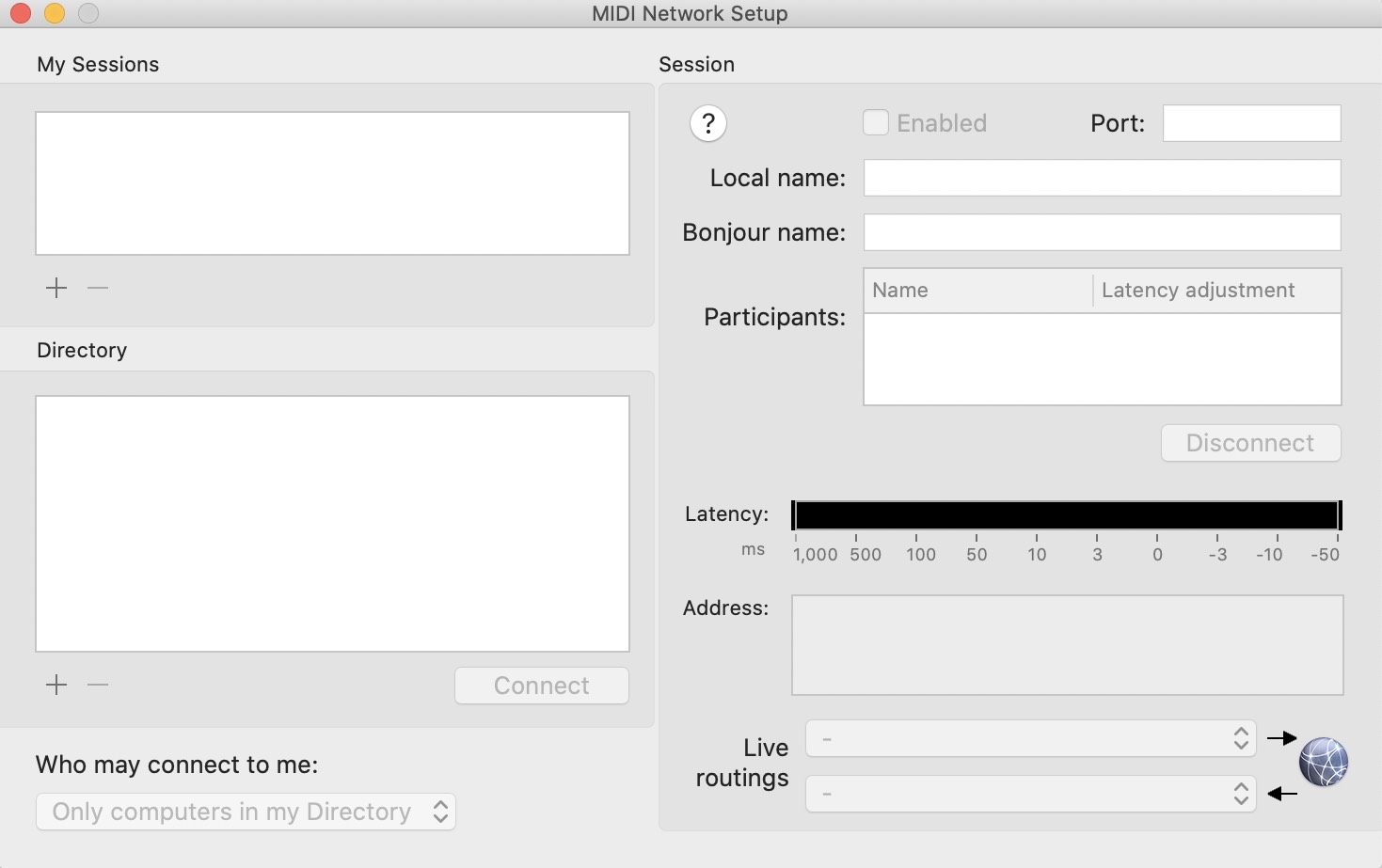 {width=80%}
{width=80%}
If the window is not shown, select Window > Show MIDI Studio & then from the MIDI Studio menu that appears, select Open MIDI Network Setup..
In newer versions of macOS, the Open MIDI Network Setup option is accessed via the Network Icon to the top right of the window, called Configure Network Driver.
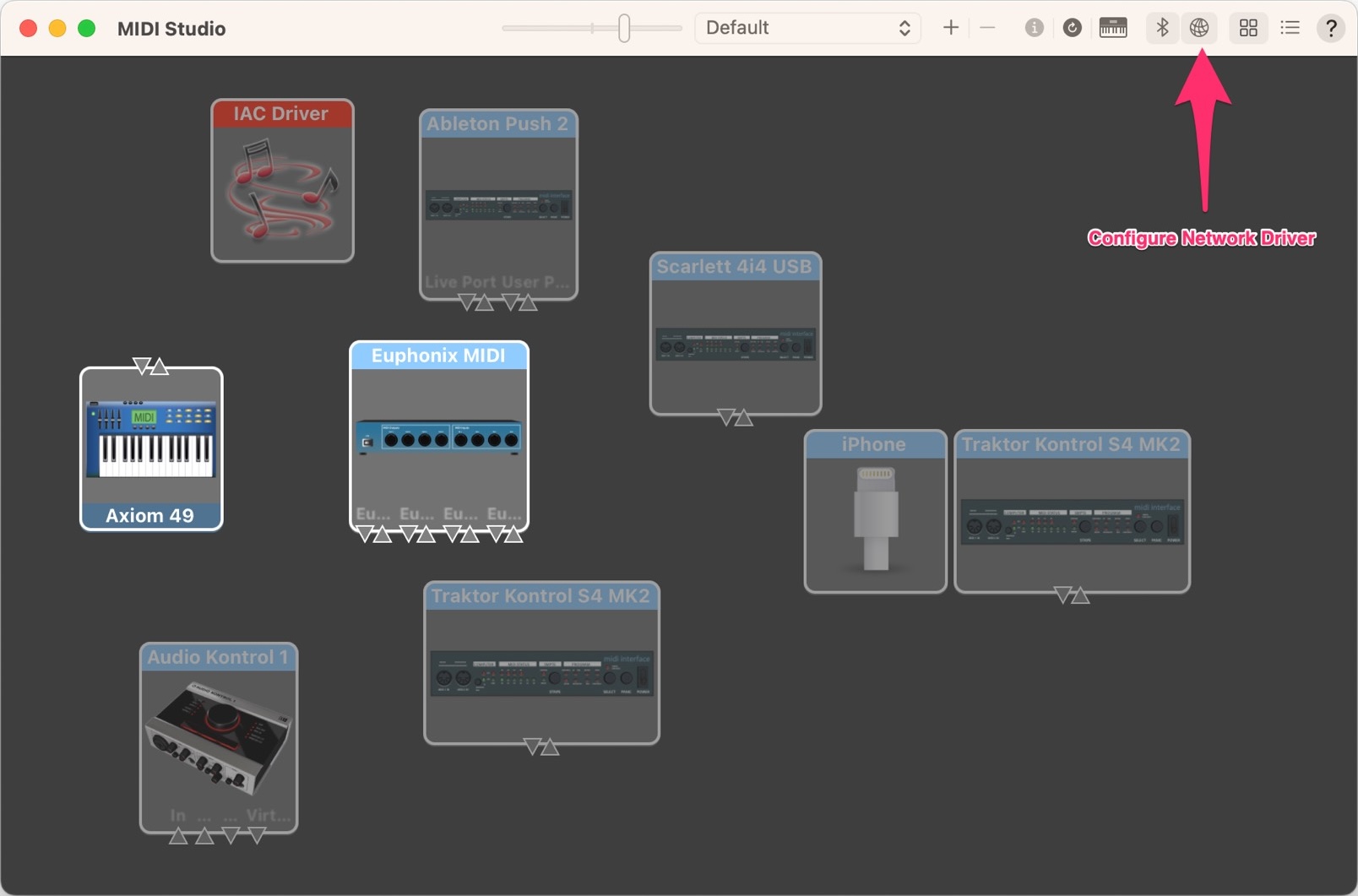 {width=80%}
{width=80%}
In older versions of Audio MIDI Setup where this option is not present, it can accessed by double-clicking the Network device icon in the default MIDI Studio window.
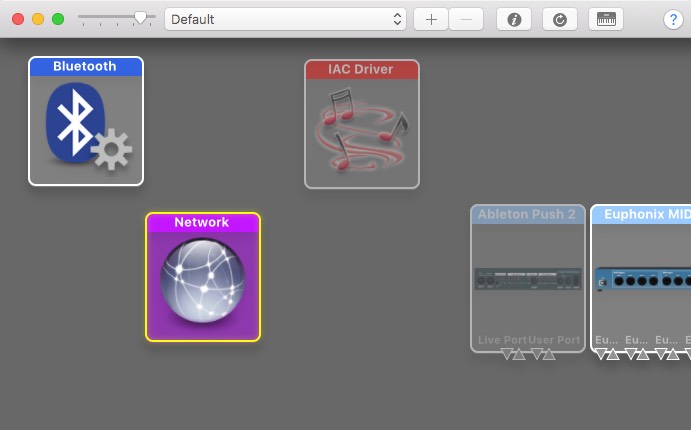 {width=80%}
{width=80%}
In the My Sessions field top left, create a new session by clicking +.
Click the checkbox to the left of the name to enable the session.
Rename it (computer 1 name) MTC/MMC Send (or something similar) - e.g. Macbook MTC/MMC Send This name will automatically be copied to the Local name field.
The Local name is the name that appears on this local computer.
Copy this name & paste it in the Bonjour name field.
The Bonjour name is the name that is displayed on the other computers in the network.
Although a session can be used in either input or output directions, to avoid confusion it is recommended to stick to one direction by noting this in the session name, e.g. Send or Out.
MTC & MMC do not require separate Network sessions made for each - they can share the same session.
Set the Port: field to 5004.
If this Port has already been assigned a different number - especially where other sessions already exist that may be using 5004, it is advised to use this suggested unique new number. Assign a unqiue number for each session - with prefereably at least one free number between each assigned port.
Select Anyone in the Who may connect to me dropbox on the bottom left.
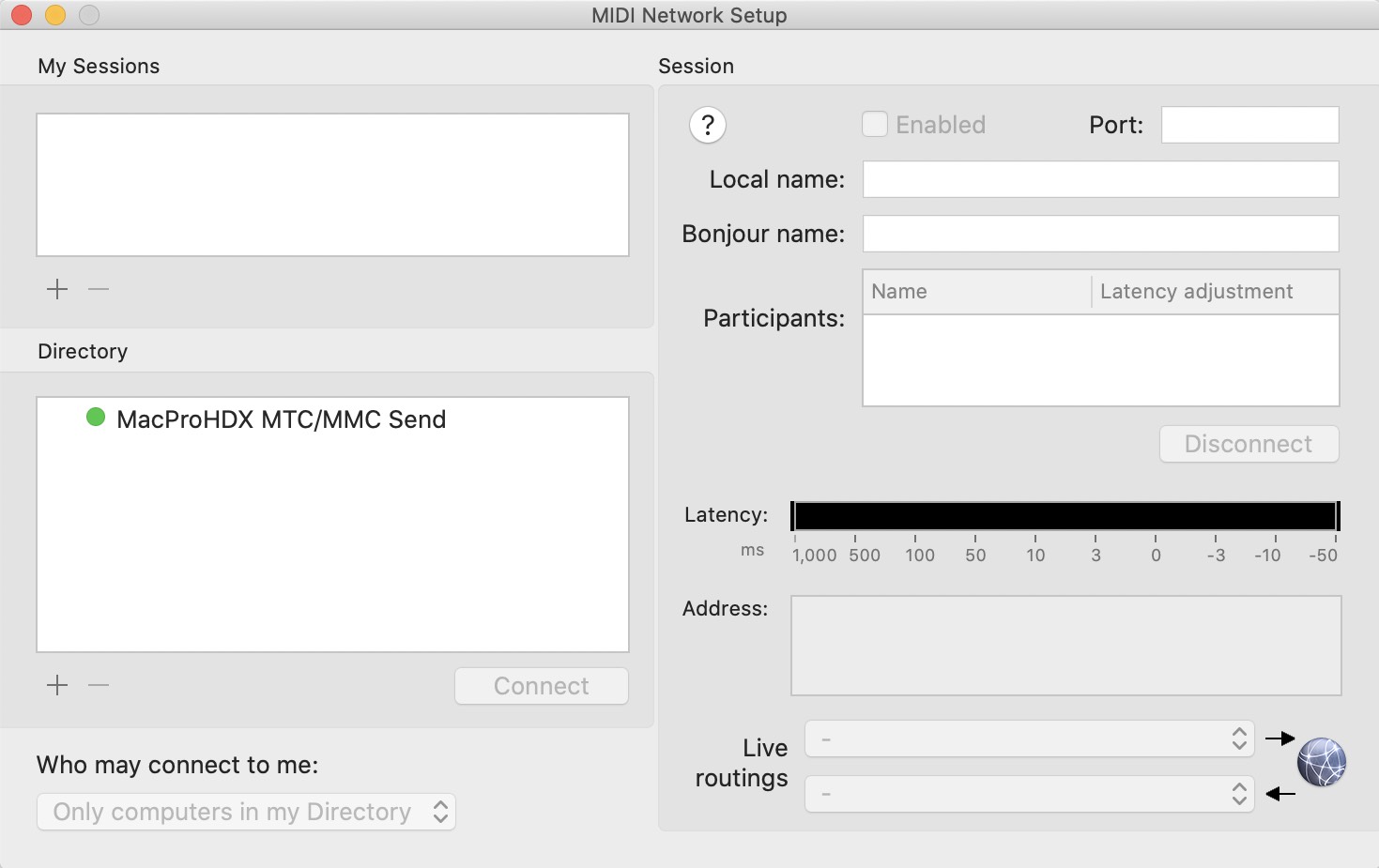 {width=80%}
{width=80%}
Configuration is complete for the Nuendo computer. This should not need to be set up again in future.
Configuring Audio MIDI Setup on the Video Sync computer to receive Network MTC & MMC
On the Video Sync computer, close Video Sync & open Audio MIDI Setup. Open the MIDI Network Setup window as described above. The Nuendo computer should be visible in the Directory field - showing (computer 1 name) MTC/MMC Send with a green active circle to the left.
 {width=80%}
{width=80%}
In the My Sessions field top left, create a new session by clicking +.
Click the checkbox to the left of the name to enable the session.
Rename it (computer 2 name) MTC/MMC Receive (or something very similar)- eg MacProHDX MTC/MMC Receive.
This name will automatically be copied to the Local name field.
Copy this name & paste it in the Bonjour name field.
Set the Port: field to 5006.
As before, if 5006 is not available, assign a unqiue number.
Select Anyone in the Who may connect to me: selection field on the bottom left.
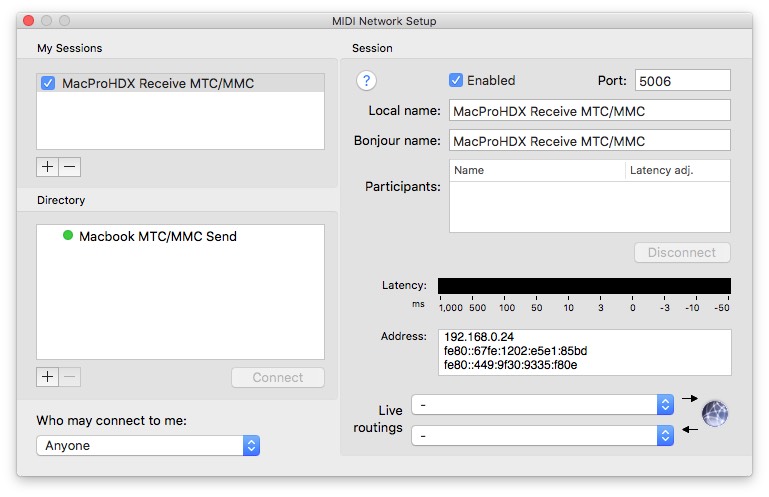 {width=80%}
{width=80%}
Connecting the Network MTC/MMC Sessions
Now that the two Sessions have been created, the next step is to connect them.
The steps until this point should not need to be done again in future. The following simple steps to connect only need to be done once every time the computers are restarted.
With the (computer 2 name) MTC/MMC Receive session selected in the My Sessions box, select (computer 1 name) MTC/MMC Send in the Directory field, and hit the Connect button.
(computer 1 name) MTC/MMC Send should now appear in the Participants: field on the right.
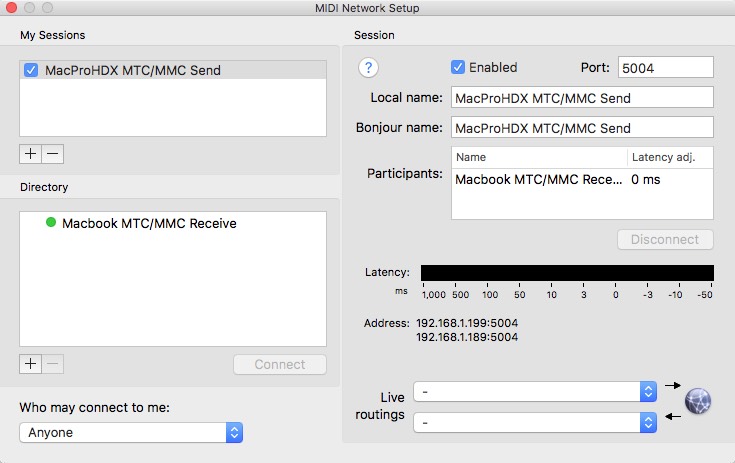 {width=80%}
{width=80%}
Regardless of which computer is chosen to Connect, only one of the computers needs to connect to establish the connection.
On the Nuendo computer, (computer 2 name) MTC/MMC Receive should now also be seen in the Participants: window.
If the (computer 2 name) MTC/MMC Receive session does not show up in the Directory list, try re-launch Audio-MIDI-Setup.
Video Sync MTC / MMC Setup
Launch Video Sync.
If Video Sync was open already, use the "Rescan Available MIDI Ports" button in the SYNC preferences.
To show the MIDI I/O options in Video Sync, first navigate to the SYNC tab of the Preferences window.
Set the Sync Source field to Other.
Next, select Network (computer 2 name) MTC/MMC Receive in both the MTC In & MMC In fields, as per the image below:.
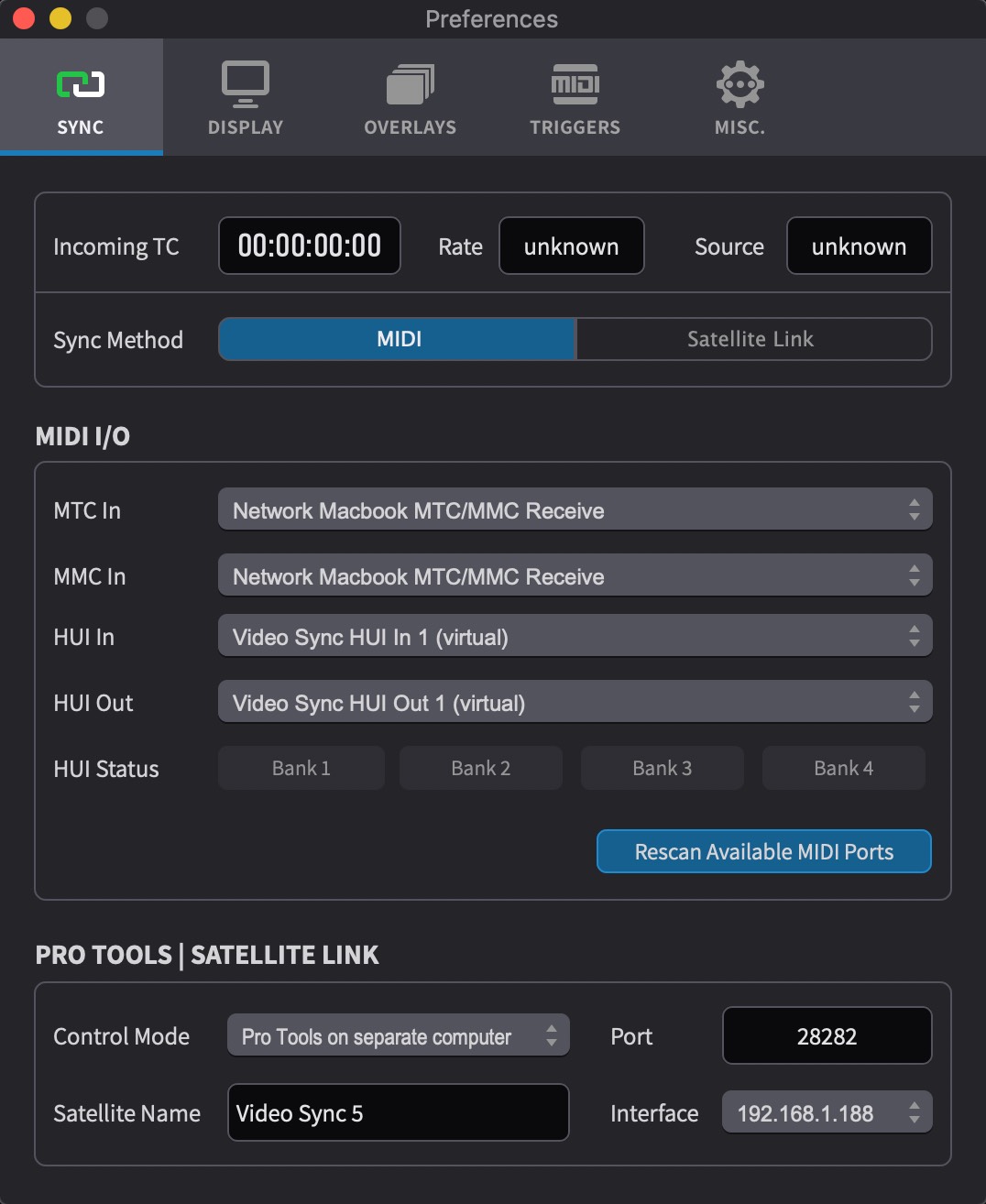 {width=70%}
{width=70%}
Nuendo Network MTC (MIDI Timecode) Setup
Go to Transport>Project Synchronization Setup.
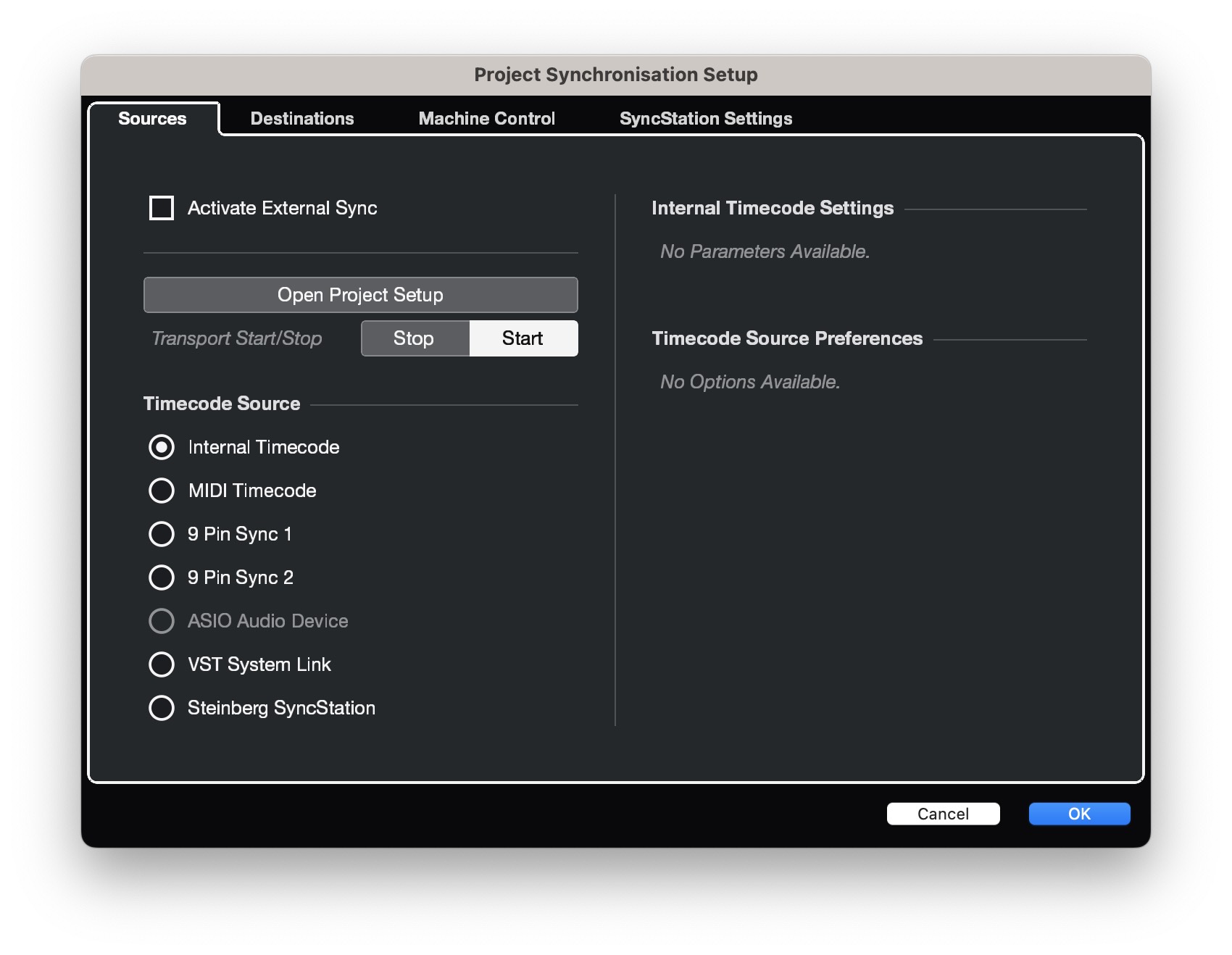 {width=50%}
{width=50%}
In the Sources tab, confirm that Activate External Sync is not enabled.
In order for Nuendo to transmit timecode, external sync must be disabled.
In the Timecode Source section, select Internal Timecode.
For earlier versions of Nuendo where the Timecode Source option is not available, set SYNC to INT from the transport panel.

In the Destinations tab, under the MIDI Timecode Destinations section, enable the tick box to the right of Network Macbook MTC/MMC Receive.
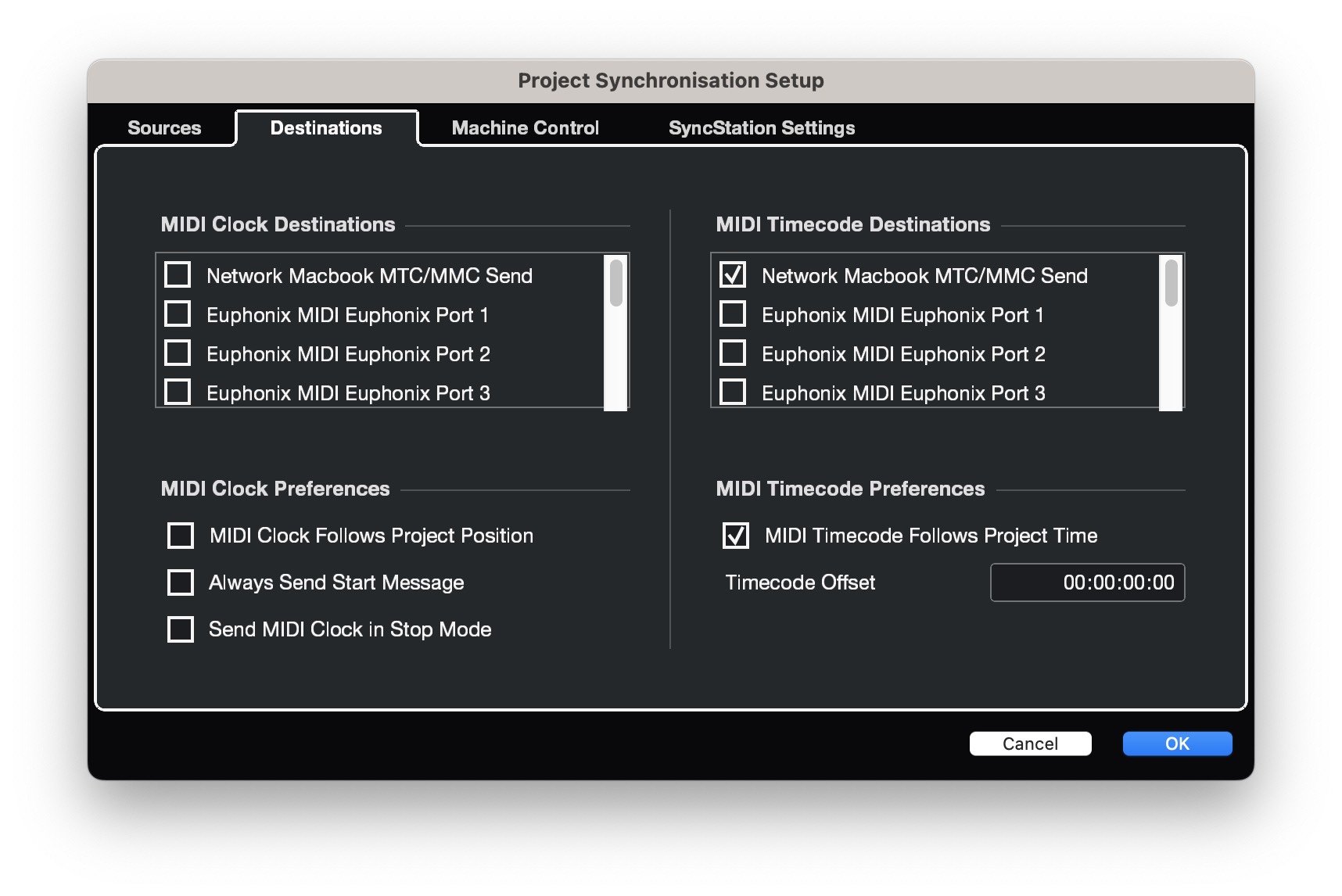 {width=50%}
{width=50%}
In the MIDI Timecode Preferences section, make sure the MIDI Timecode Follows Project Time option is enabled.
Nuendo MMC (MIDI Machine Control) Setup
In the Machine Control tab under the Machine Control Output section, enable MIDI Machine Control.
In the Machine Control Output Settings section, set MIDI Output to Network Macbook MTC/MMC Send.
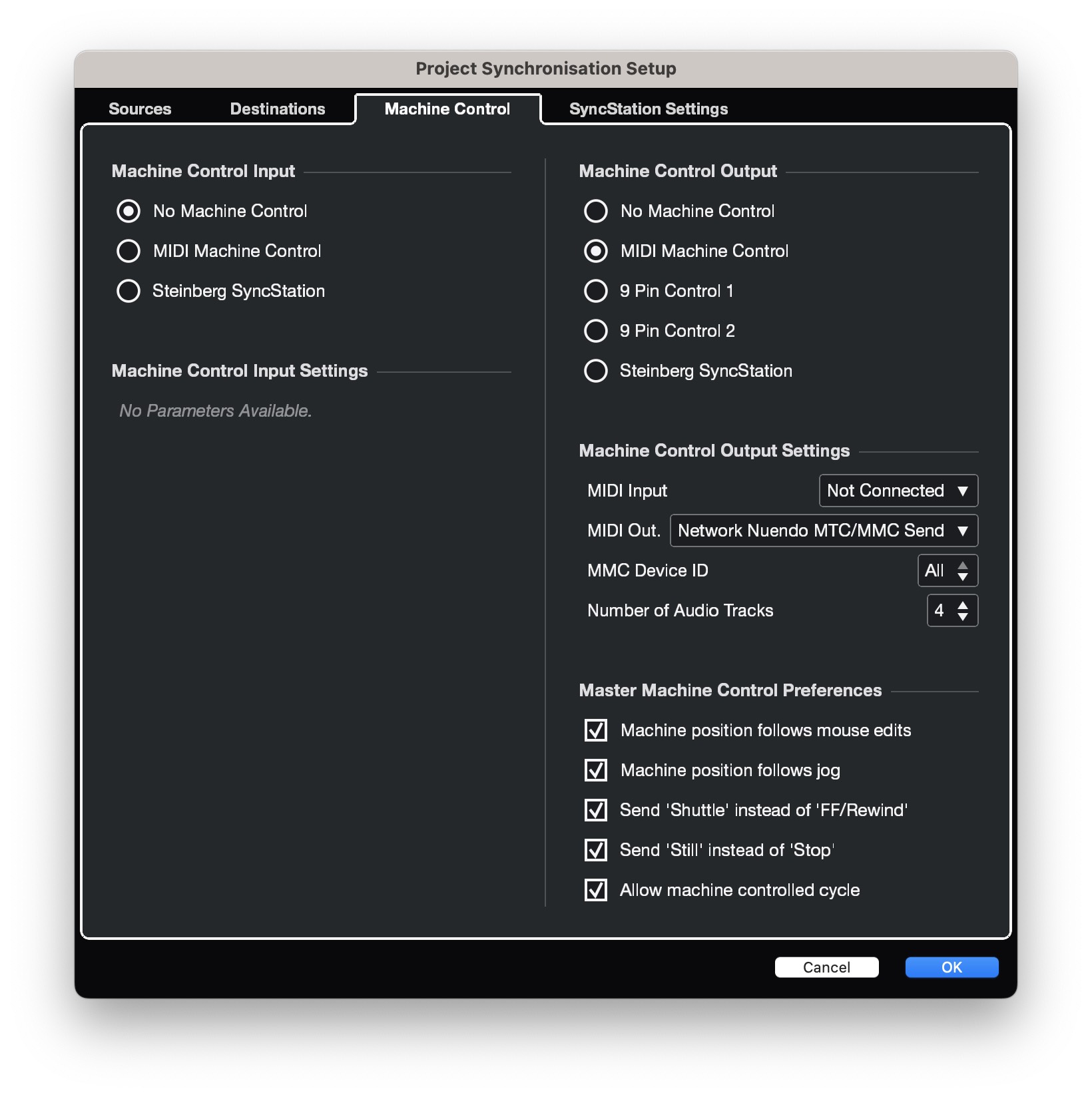 {width=50%}
{width=50%}
Confirm that MMC Master Active is enabled.
Click OK to close the window.
Enabling Synchronised playback
When hitting play or scrubbing within Nuendo, both the incoming timecode field should now be seen incrementing & the timecode rate displayed within the Incoming TC section to the left of the main timecode counter in Video Sync.
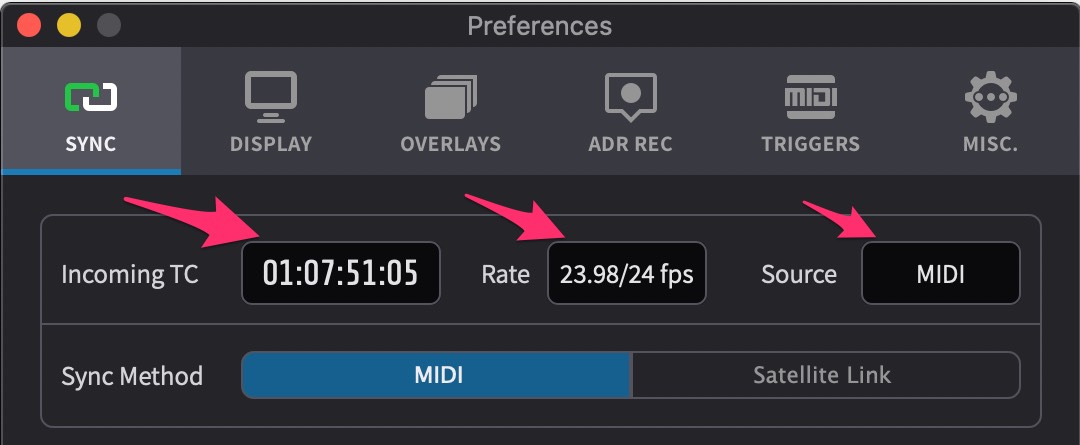 {width=70%}
{width=70%}
If the Sync button to the left of the transport buttons isn't already blue, click on it to activate it to follow external sync.
 {width=40%}
{width=40%}
Video Sync MTC/MMC sync is now online & ready to go. Hit play in Nuendo and Video Sync will play back in sync.
Dealing with MTC sync with high frame rate content
Video Sync allows for synchronised playback of clips running at up to 60 frames per second. Being a standard from the 80s, MIDI timecode (MTC) does not support frame rates higher than 30 frames per second. To be able to play timelines with these high frame rate clips in sync to MTC, Video Sync will try to match the incoming TC at half the frame rate. For example, if the timeline has a 50fps clip, Video Sync will play it in sync if a 25fps MTC source is supplied.
In the timeline list, the timeline frame rate is shown here:
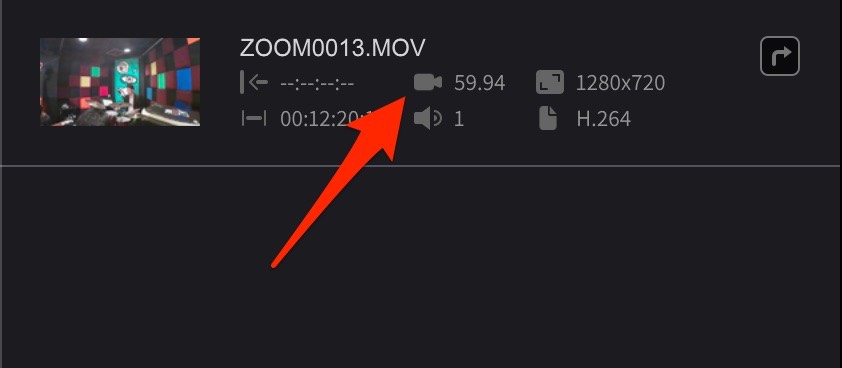 {width=60%}
{width=60%}
